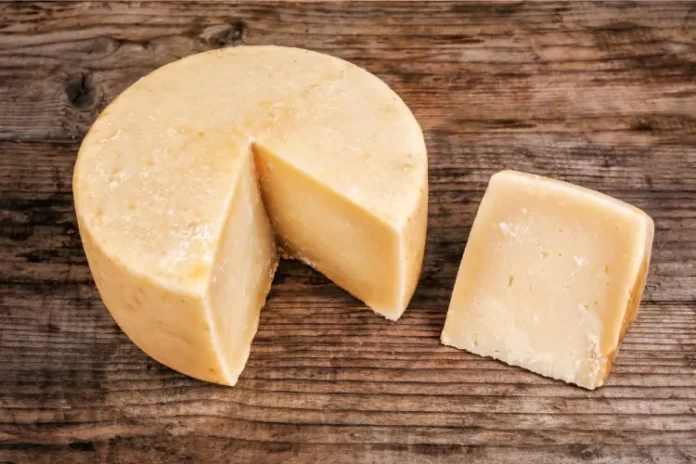Get To Know What Makes This Italian Ingredient So Special. There are six primary types of pecorino, but for this article, we’ll cover the four most popular (and PDO-certified) variants.
If you’ve never heard of pecorino cheese, you’re certainly missing out! This Italian staple is produced in areas all over the country. It’s been included in recipes for generations, going back hundreds of years. Now, it’s time to bring that tradition into your own home.
Today, we won’t just learn about pecorino—we’ll also cover exactly how it’s created and the best ways to enjoy it! So, leave your culinary comfort zone and learn about the delicious pecorino cheese.
A Brief History of Pecorino Cheese
Though it’s not quite as well-known as some of its companions, pecorino is still one of the world’s oldest cheeses! It’s deeply rooted in Italian culture and traditionally produced in areas like Sicily, Lazio, and Tuscany. Each area has its own take on the cheese, which we’ll discuss shortly.
Pecorino derives from “pecora,” the Italian word for sheep. That’s because this cheese is made entirely from sheep’s milk! Though some other cheeses, like feta and brocciu, are also made from sheep’s milk, pecorino is one of the few sheep-based cheeses made in Italy.
The Main Types of Pecorino Cheese
As we established earlier, every area of Italy that produces pecorino has its own spin on its creation. There are six primary types of pecorino, but for the purposes of this article, we’ll cover the four most popular (and PDO-certified) variants.
Pecorino Romano
Pecorino Romano is one of the oldest and most famous varieties of pecorino, with a history dating back to Roman times. Though that may seem obvious by the name, it’s produced in Rome. This hard, salty cheese is made primarily from the milk of sheep grazing on the wild pastures of Lazio and Sardinia. Aged for a minimum of five months, it has a sharp, tangy flavor with a slightly gritty texture. You can find it in many classic Italian recipes!
Pecorino Sardo
Pecorino Sardo, also known as Fiore Sardo, is produced exclusively in Sardinia. There are two main types: Dolce (sweet), which is aged for a minimum of 20 days, and Maturo (mature), which is aged for at least two months. Pecorino Sardo is less salty than Romano and has a more nuanced flavor profile that ranges from sweet and delicate to rich and intense.
Pecorino Toscano
Pecorino Toscano is a softer, more buttery cheese than its pecorino counterparts. Made from the milk of Tuscan sheep, it has a more rounded and less salty flavor. Aged for at least 20 days, but often much longer, it develops a nutty, sweet flavor with age.
Pecorino Siciliano
Few Italian cheeses aren’t produced in Sicily, and pecorino is no exception! Pecorino Siciliano has been made in Sicily for over 2000 years. This cheese is known for its strong and spicy flavor, which results from the plant life consumed by the sheep whose milk it is made from. It is aged for at least four months, developing a hard texture and a rich flavor profile.
How Is Pecorino Produced?
The production of pecorino can be simplified into a six-step process. That process goes a little something like this:
- Collection and Warming of Sheep’s Milk: Pecorino cheese begins with the collection of sheep’s milk. This milk is then gently warmed to a specific temperature, setting the stage for coagulation. The warmth initiates changes in the milk, preparing it for the next step.
- Adding Rennet and Curd Formation: Rennet, a natural enzyme, is added to the warmed milk to induce coagulation. This process separates the milk curds from the liquid whey, which gives the cheese its texture and flavor.
- Curd Cooking and Texturing: Once the curds have formed, they are cooked until they reach the desired firmness. The cooking temperature and duration vary among Pecorino varieties, with some cheeses undergoing only partial cooking to gain a softer texture.
- Draining, Molding, and Pressing: After cooking, the curds are drained to remove excess whey and then placed into traditional drum-shaped molds. These molds give Pecorino its distinct shape. The curds are pressed to expel the remaining whey and compact the cheese.
- Brine Washing: Once formed, the cheese drums are washed with brine, often by hand. This salting process seasons the cheese and creates a natural rind, helping preserve the cheese and enhance its flavor.
- Aging in Cheese Cellars: The final (and perhaps most important) step is aging. Pecorino cheeses are aged in cellars for a minimum of 20 days to over two years, depending on the specific variety. The aging process allows for the development of flavors, which can range from mild and creamy in younger cheeses to sharp in older ones.
What Should I Eat Pecorino With?
This is a complicated question. You likely understand by now that you’ll have quite a different flavor depending on the age and variety of pecorino you’re dealing with. So, to break things down, let’s divide our recommendations into age-specific categories!
With Food:
Young Pecorino: Pair with crisp apples, pears, or a drizzle of honey.
Aged Pecorino: Perfect with charcuterie, olives, and sun-dried tomatoes.
With Wine:
Young Pecorino: A chilled glass of Vermentino or a light, fruity red complements its creamy texture.
Aged Pecorino: Opt for red wines like Chianti or a bold Sagrantino to match its intense flavors.
Pecorino Vs. Parmesan Cheese
Pecorino and parmesan cheese have what one could call a friendly rivalry. While the two cheeses have similarities, they have distinct differences in texture and flavor profiles. Perhaps the largest distinction between these two cheeses is what they’re made from. As we’ve covered, pecorino is made from sheep’s milk. Parmesan, though, is nearly always produced from cow’s milk.
Add Pecorino To Your Dinner Menu
Now that you’ve become a bonafide pecorino expert, it’s time to put that knowledge to the test by incorporating this cheese into your meals! Rich in both history and flavor, it’s an addition to your meals that is sure to impress. Experiment with the different types, and find out which is the perfect cheese for you.


